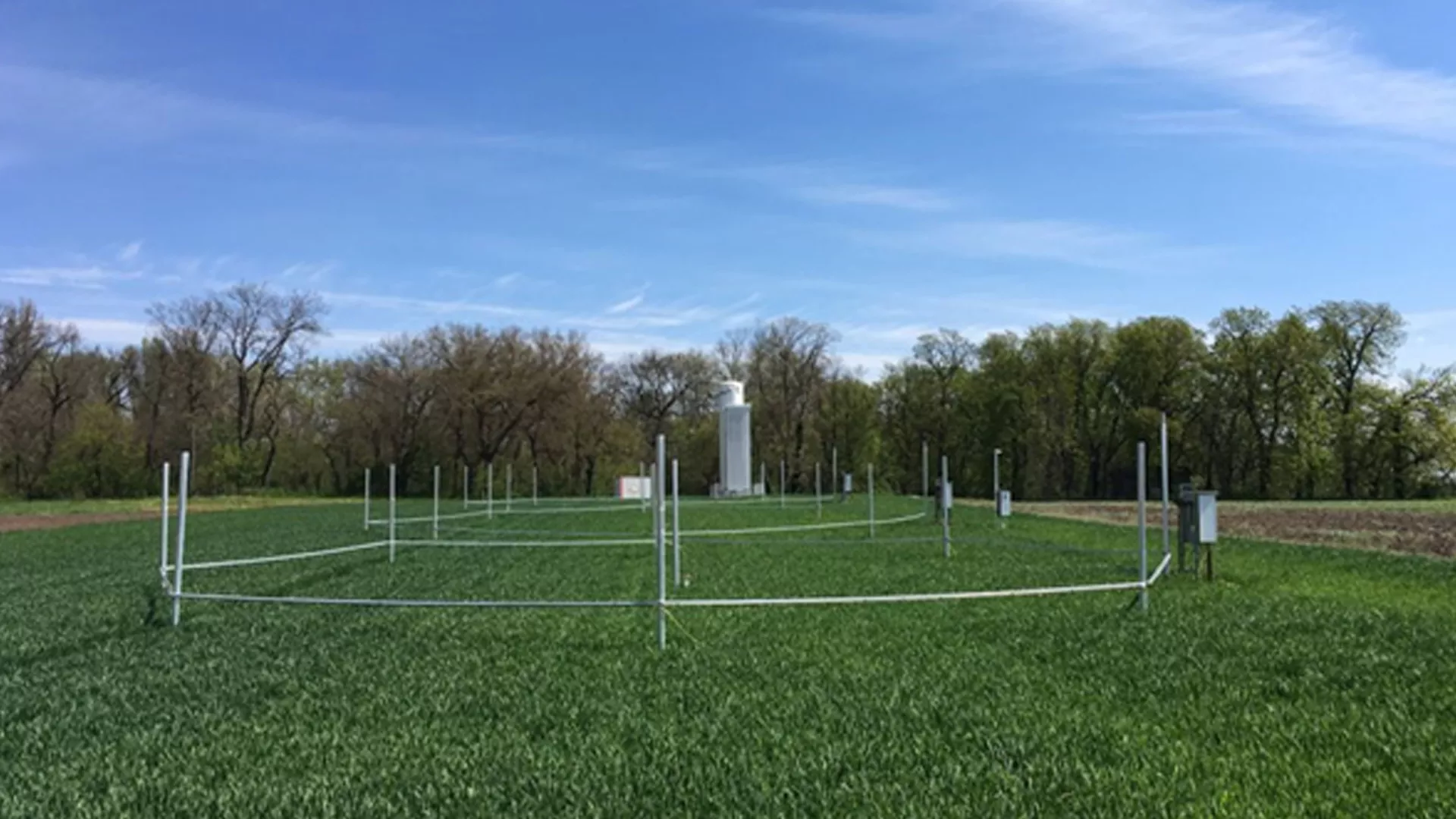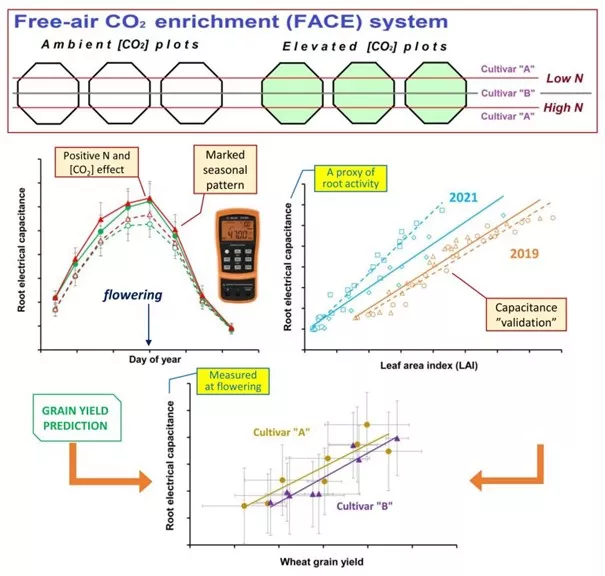Researchers from the Institute of Soil Sciences and the Agricultural Institute of HUN-REN Centre for Agricultural Research (HUN-REN CAR), as well as from Eötvös Loránd University, published their methodological results on a free-air carbon dioxide enrichment experiment (FACE) of winter wheat in the prestigious journal Plant and Soil. They revealed the effect of an elevated (600 ppm) atmospheric carbon dioxide concentration and different nitrogen supply levels on root and shoot production using only the non-destructive root electrical capacitance method and leaf area index (LAI) measurements.

Field data verified the relationship between root electrical capacitance linked to water uptake activity and LAI (related to the potential canopy transpiration) and grain yield. Differences in root growth dynamics and responsiveness to climate change between wheat cultivars were also evaluated. Root electrical capacitance measurement, as an in situ phenotyping tool, potentially contributes to selecting crop varieties with an improved adaptability to changing climate and a higher yield stability. Application of the method could be particularly beneficial in experimental systems, where soil disturbance and plant damage should be avoided.

Publication:
Cseresnyés I, Pokovai K, Barcza Z, Marton, TA, Fodor N (2022): Root electrical capacitance as an indicator of wheat growth and yield in a free-air carbon dioxide enrichment (FACE) experiment. Plant and Soil 474: 321–335. doi:10.1007/s11104-022-05336-1